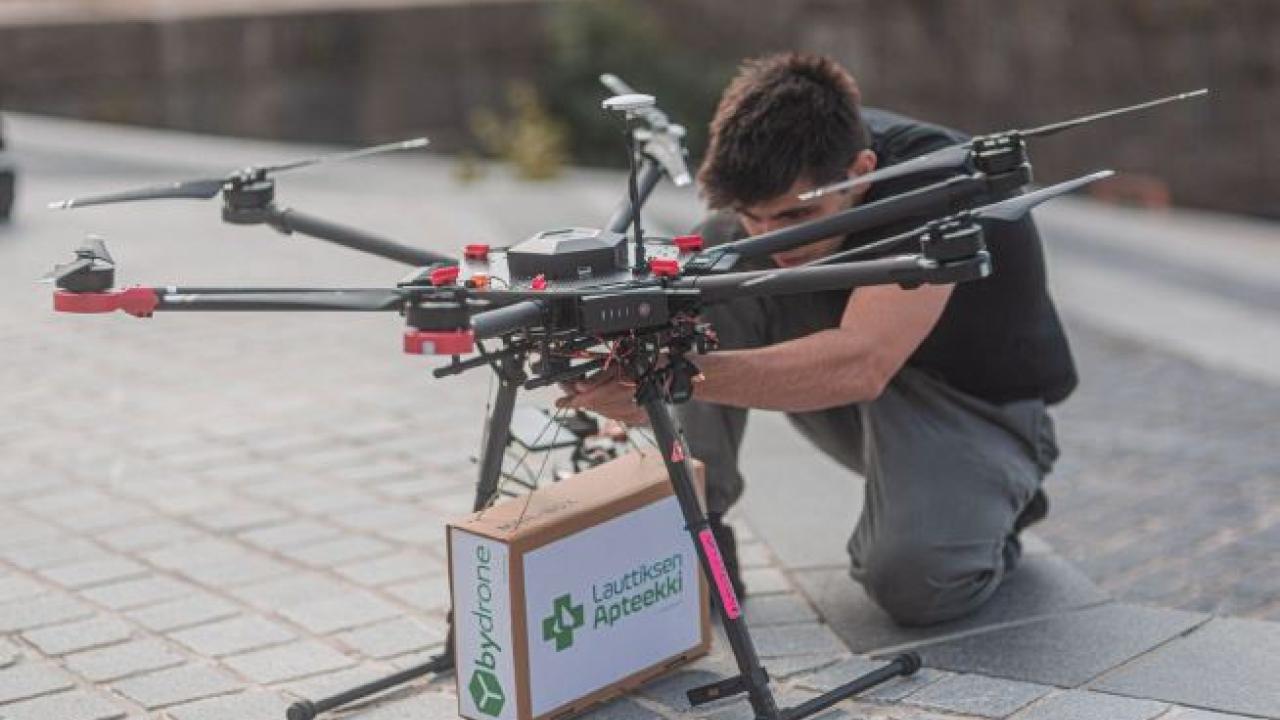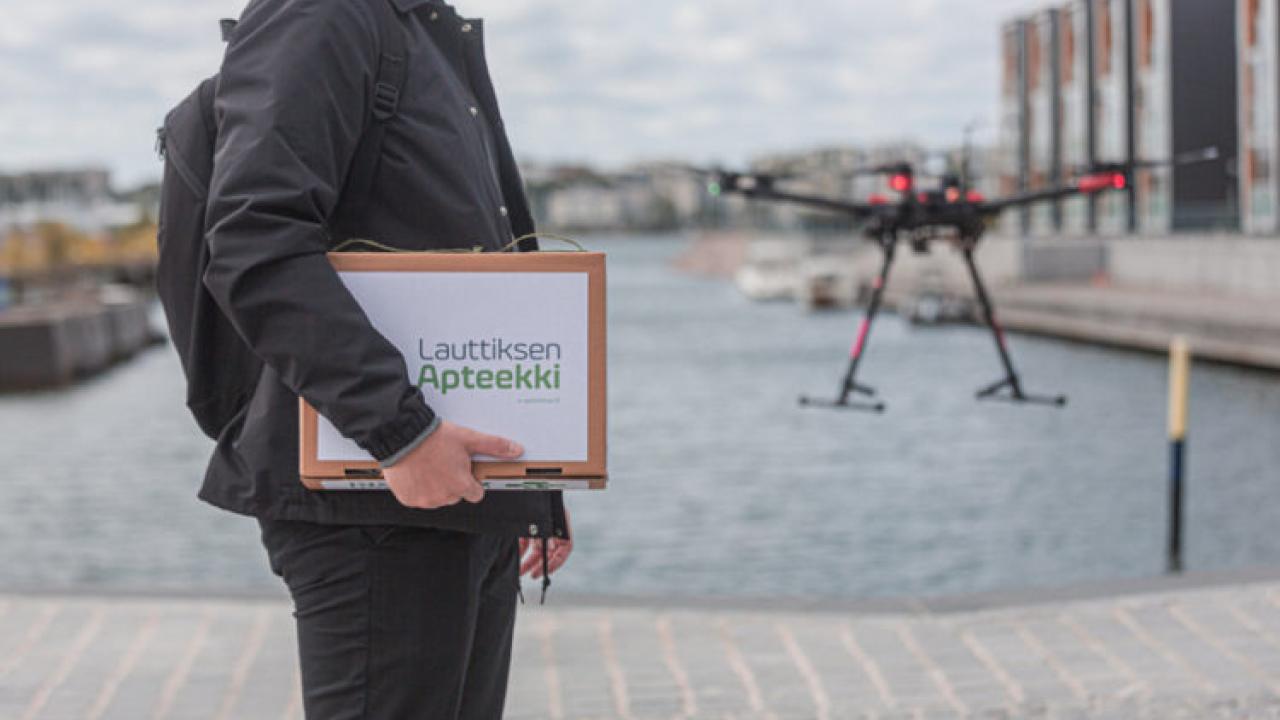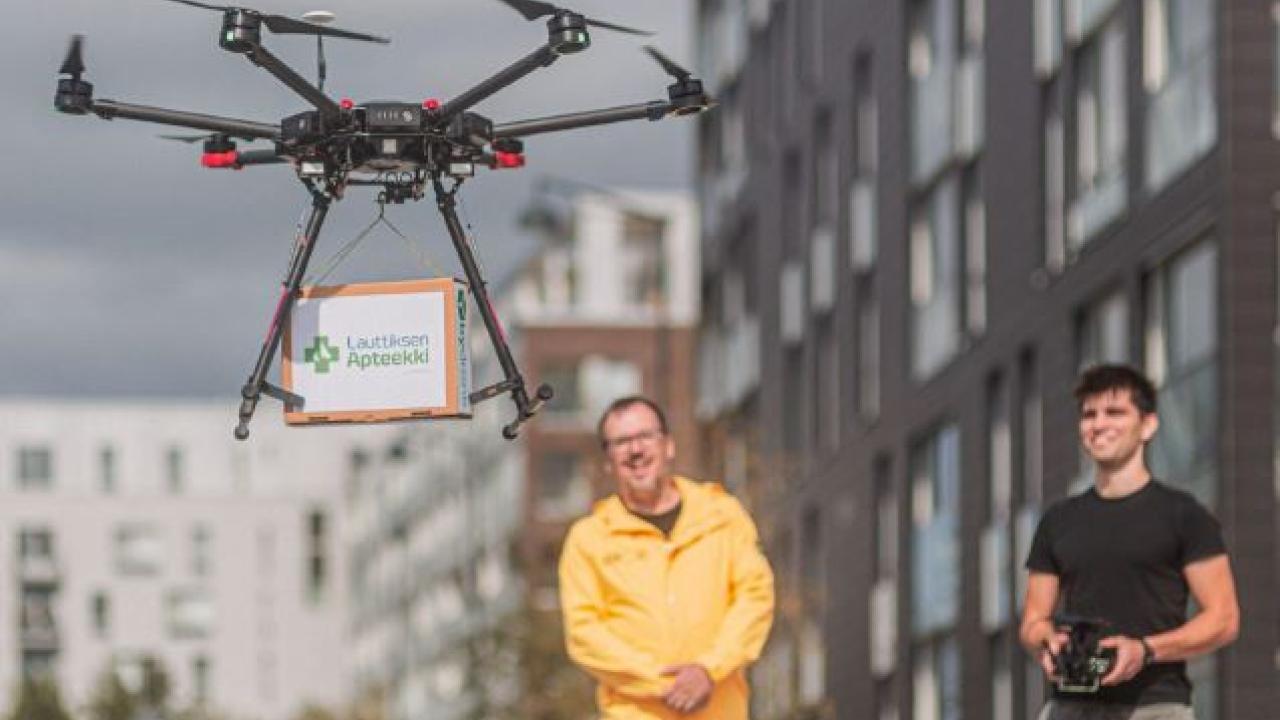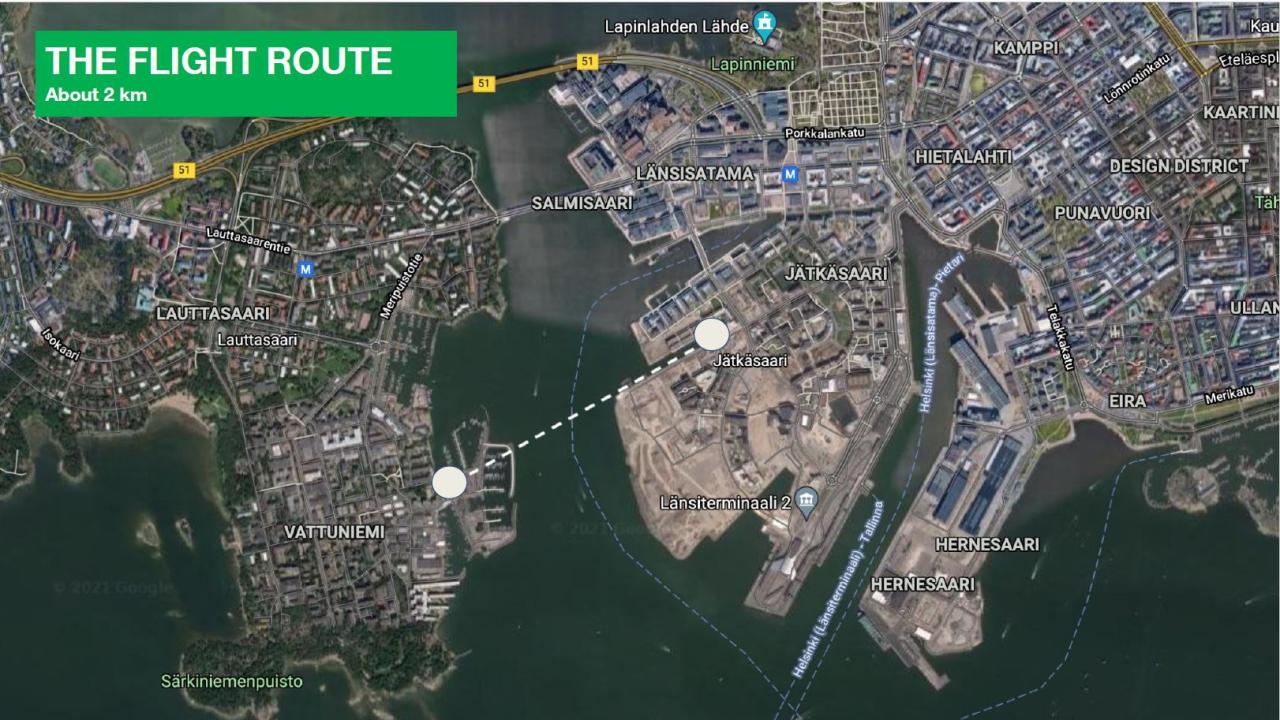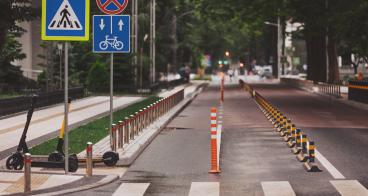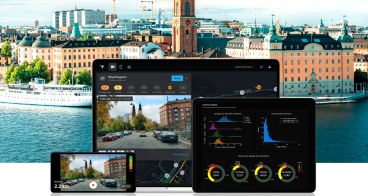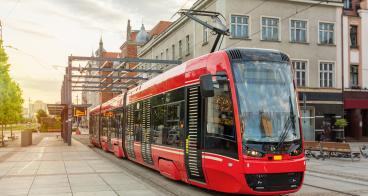Helsinki: Trialing drone deliveries of pharmacy products
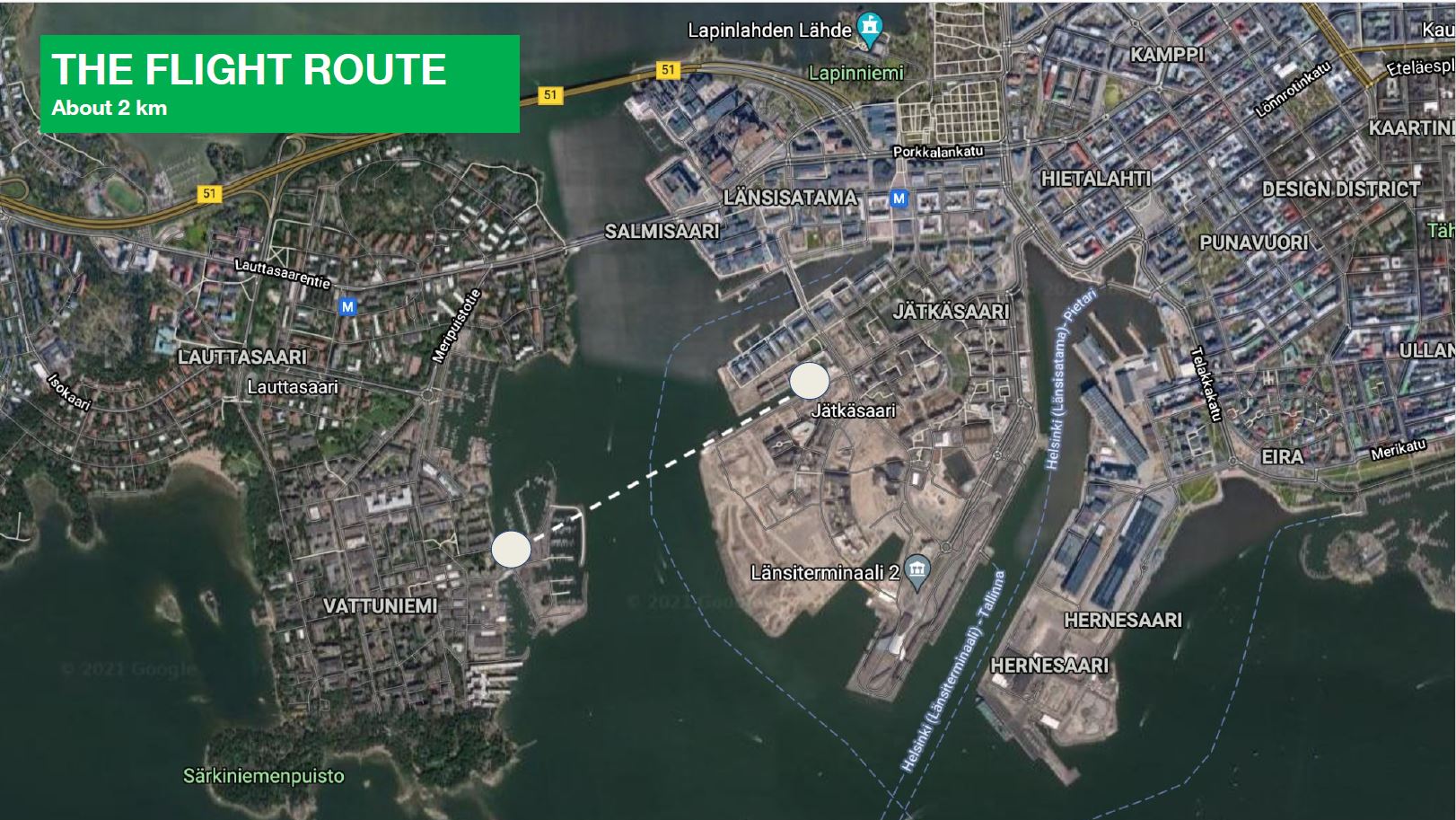
The Challenge
The aim of the pilot was to gather learnings on the sustainability of drones as an extension to urban logistics chains and to test a new service concept with paying customers in a real urban environment. Electric drones, such as the one used in this pilot, have the potential to reduce emissions in the logistics sector. Other advantages include reduced journey times and the ability to access remote places with scarce services.
The project objectives were as follows:
- Explore the feasibility of using commercial drones to fulfil the middle mile within on-demand / time sensitive logistics systems servicing pharmaceutical and emergency medical supply chains
- Navigate nascent regulatory and compliance frameworks to enable beyond visual line of sight flights over urban environments
- Identify operational constraints relating to the nature of payload (temperature) and drop mechanism (impact)
- Test the end-to-end user experience
- Study community acceptability and media sentiment for this emerging mode of transport
The Solution
The ByDrone Helsinki pilot, was a 3 day experiment (flights between 24th and 29th August, 2021 ) to deliver products ordered via an e-commerce pharmacy platform to their customers via drone. The drone used in the trial was a DJI M600 with a payload of 5kg. The deliveries were made between Lauttasaari and the Jätkäsaari district over the sea on a flight path of approximately 2km (up to 4 minutes flight time).
Customers were given the option to choose drone delivery (in addition to traditional means) from the pharmacy webstore. The pharmacy products ordered by the customer were packed in temperature-controlled packaging.
The pharmacy's customers were able to order non-prescription products by drone transport from Lauttiksen Apteekki’s online store. Once payment was processed, customers received a text message with the exact time of delivery and the pharmacy customer service number, so that they were given ample time to arrive at the drone port in Saukontori square in Jätkäsaari to pick up their delivery. The pharmacy staff were trained in the process of packaging, stickering, logging orders and were also provided with FAQ’s if customers had questions.
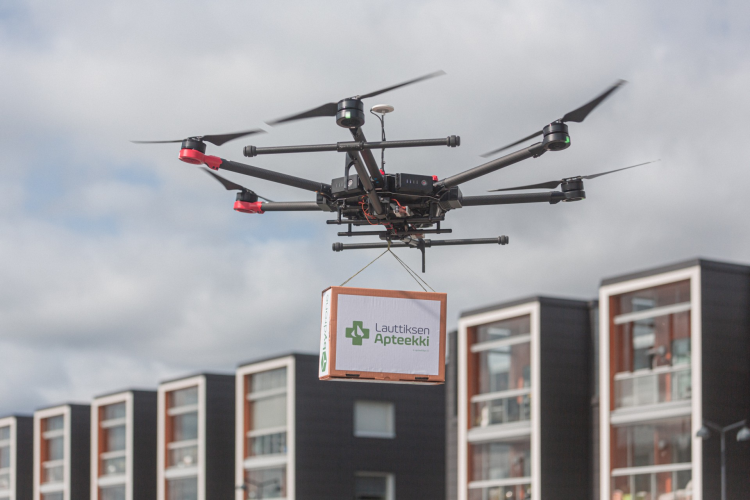
Making an impact
- A total of 7 deliveries were successfully made to real customers during the pilot’s three day operation.
- Additionally test flights were made during the operation days.
- The pilot clearly demonstrated the immense time saved in flying point to point
- By tracking temperature and impact the pilot clearly demonstrated that the ByDrone system is a promising tool for medical deliveries.
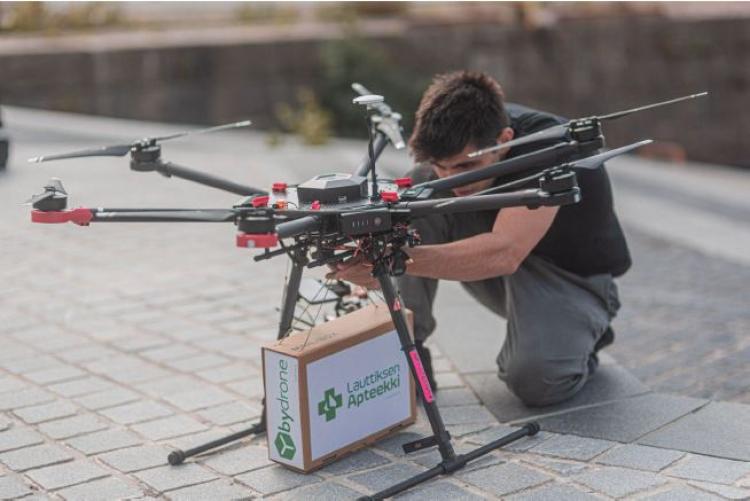
Lessons learnt
The pilot was considered a success in achieving its aim and objectives. The key learnings and findings of the pilot were as follows:
- The deliveries were subject to weather conditions. Weather plays a critical role in the safety of flight operations. Therefore any irregularity disrupts the economic viability of the solution versus traditional means of transport specific to urban areas.
- It is absolutely necessary to have a strong team with engineering, regulatory and operational experiences as there is no existing benchmark with regard to standard operation procedures for beyond visual line of sight deliveries with a Matrice 600 drone.
- A committed sponsor and customer as well as risk appetite amongst the regulators are keys to a successful pilot.
- Having a consistent radio link using 4G or 5G is critical especially for platforms like the DJI which are not designed for beyond visual line of sight flights or when flying in urban areas with objects blocking the signal, such as buildings and trees.
- The number of crew required to operate a drone affects the price per unit of transporting products.
- The rules relating to beyond visual line of sight flights in urban areas are yet to be crystalised so there are still many unknowns. As a consequence it takes time to get the flight authorisations from the relevant authorities. For this pilot it took close to three months to obtain authorisation.
- As the pilot tried and tested a commercial platform there was ample OEM documentation available to co



